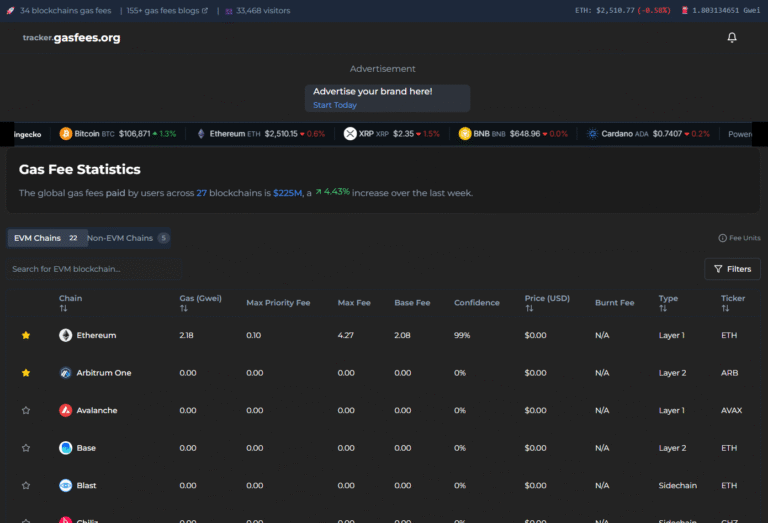
What are Ravencoin Gas Fees?
Ravencoin (RVN) operates differently from smart contract platforms like Ethereum, so it doesn’t have traditional gas fees.
Instead, it uses a minimal transaction fee system. These fees are paid in Ravencoin (RVN) tokens and are directly tied to the size of the transaction in bytes rather than its monetary value.
This model is based on Bitcoin’s architecture, ensuring straightforward and predictable costs.
Here’s how the fees work:
Transaction Size: The fees depend on the transaction’s data size, measured in bytes. For example, a simple RVN transfer might cost only a fraction of a token, while a transaction involving asset creation or transfer (which has more complex metadata) could incur slightly higher fees.
Incentivizing Miners: These fees are part of the block reward system. Miners receive the transaction fees along with the block rewards (currently 2,500 RVN per block), incentivizing them to maintain the network.
Network Load: Fees can fluctuate during periods of high network activity, as users may opt to pay slightly more to prioritize their transactions.
Affordability: Ravencoin’s transaction fees are designed to remain low to facilitate the creation and transfer of custom digital assets like securities, collectibles, or physical asset representations.
This fee system ensures that Ravencoin remains efficient for both regular transactions and more complex asset transfers, making it a cost-effective choice for decentralized asset issuance





